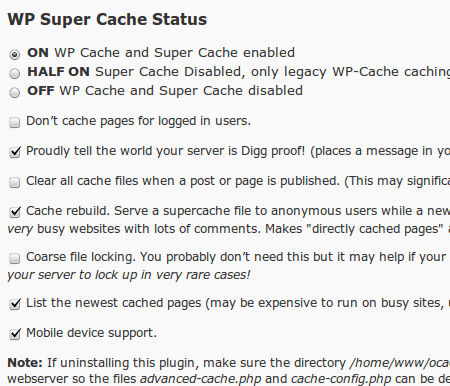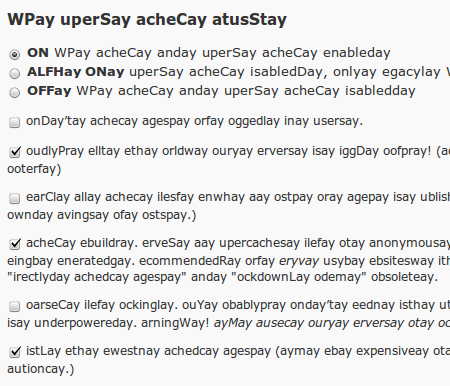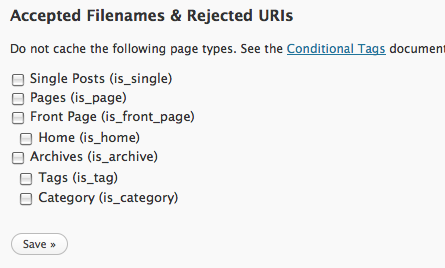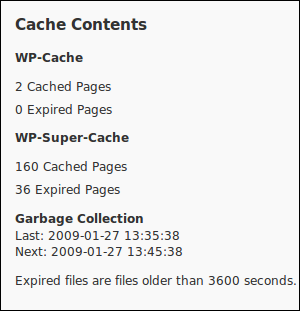WP Super Cache version 0.9.7 is now available. WP Super Cache is a page caching plugin for WordPress that will significantly speed up your website.
Since the last release of the plugin a number of new features have been adding, bugs fixed, and documentation updated. For a taster, here are the changes from the readme.txt:
- Fixed problem with blogs in folders.
- Added cache file listing and delete links to admin page.
- Added “Newest Cached Pages” listing in sidebox.
- Made admin page translatable. (work in progress)
- Added “How do I make certain parts of the page stay dynamic?” to FAQ.
- Disable supercaching when GET parameters present instead of disabling all caching. Disable on POST (as normal) and preview.
- Fixed problem with cron job and mutex filename.
- Warn users they must enable mobile device support if rewrite rules detected. Better detection of when to warn that .htaccess rules must be updated (no need when rewrite rules not present)
- Use the wordpress_test_cookie in the cache key.
- Show correct number of cache files when compression off.
- Fixed problem with PHP safe_mode detection.
- Various bugfixes and documentation updates. See Changelog.txt
- Advanced: added “late init” feature so that plugin activates on “init”. Set $wp_super_cache_late_init to true in config file to use.
- Advanced: Added “wpsupercache_404” filter. Return true to cache 404 error pages.
If you’re upgrading and your blog is installed in a sub directory the mod_rewrite rules may not have been created correctly. You’ll know this because the timestamp on your cached pages will change on every load. If that happens, remove the Supercache rewrite rules and recreate them through the admin page.
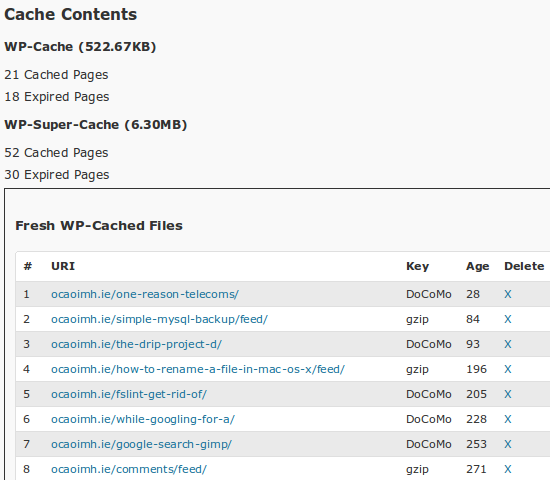
You can list all the blog’s cache files now, ordered by generation time. From that listing you can delete individual files.
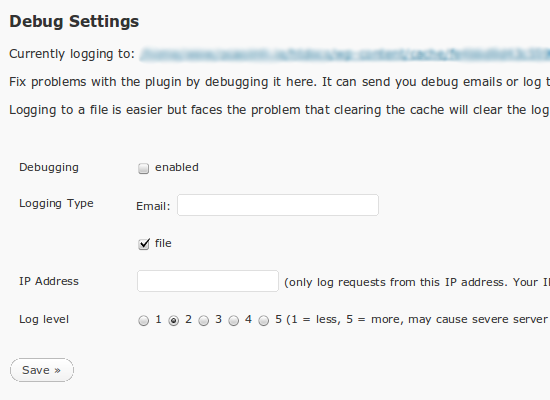
The debug function is very powerful. You can choose the level of logging. Level 1 logs errors and warnings of a serious nature. Level 5 logs them plus lots of normal functions. Here’s what level 5 logging looks like for one single request:
20:49:34 /was-the-janitor-really-in-the-fugitive/ No wp-cache file exists or user agent rejected.
20:49:35 /was-the-janitor-really-in-the-fugitive/ In WP Cache Phase 2
21:49:35 /was-the-janitor-really-in-the-fugitive/ Setting up WordPress actions
21:49:35 /was-the-janitor-really-in-the-fugitive/ Created output buffer
21:49:35 /was-the-janitor-really-in-the-fugitive/ supercache dir: /www/wp-content/cache/supercache/ocaoimh.ie/was-the-janitor-really-in-the-fugitive/
21:49:35 /was-the-janitor-really-in-the-fugitive/ Output buffer callback
21:49:35 /was-the-janitor-really-in-the-fugitive/ supercache dir: /www/wp-content/cache/supercache/ocaoimh.ie/was-the-janitor-really-in-the-fugitive/
21:49:35 /was-the-janitor-really-in-the-fugitive/ Anonymous user detected. Only creating Supercache file.
21:49:35 /was-the-janitor-really-in-the-fugitive/ Gzipping buffer.
21:49:35 /was-the-janitor-really-in-the-fugitive/ Writing non-gzipped buffer to supercache file.
21:49:35 /was-the-janitor-really-in-the-fugitive/ Writing gzipped buffer to supercache file.
21:49:35 /was-the-janitor-really-in-the-fugitive/ Renamed temp supercache file to /www/wp-content/cache/supercache/ocaoimh.ie/was-the-janitor-really-in-the-fugitive/index.html
21:49:35 /was-the-janitor-really-in-the-fugitive/ Renamed temp supercache gz file to /www/wp-content/cache/supercache/ocaoimh.ie/was-the-janitor-really-in-the-fugitive/index.html.gz
21:49:35 /was-the-janitor-really-in-the-fugitive/ Sending buffer to browser
That’s a lot of text. Keep an eye on the load on your server because logging that much data on a busy server will add extra load. Start by limiting the logging to your own IP and test with various browsers.
The error messages that are normally sent to the browser about “missing html tag”, “404 error” and “blank page” are now only shown if debugging is enabled. This will hopefully avoid problems with PHP scripts that generate Javascript.
This release adds a new “late init” feature. This is only useful in half-on mode however. This causes the plugin to create the “cache key” and display the cached page at the end of the “init” action, after all WordPress include files and plugins have been loaded. This is very useful if your application needs to interrogate the database to modify the cache key. Activate it by setting $wp_super_cache_late_init to true in the config file.
Lots to digest and new toys to try out. Hope you enjoy this new version of the plugin!

